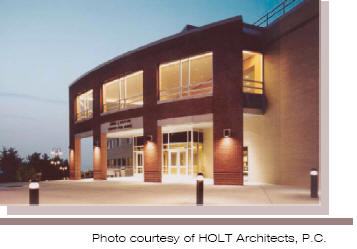 |
 |
|
|
THESIS RESEARCH Architectural Lighting Design Illuminating Engineering Society of North America, The IESNA
Lighting Handbook Ninth Edition. New York, NY: IESNA Ander, Gregg D., Daylighting Performance and
Design. Hoboken, NJ: John Wiley & Sons, Inc. Electrical System Design American Society of Heating, Refrigerating and Air-Conditioning
Engineers, ANSI/ASHRAE/IESNA Standard 90.1-2001. Atlanta, GA:
ASHRAE Hughes, S. David, Electrical Systems in
Buildings. Albany, NY: Delmar Publishers, Inc. Structural Design American Institute of Steel Construction, LRFD Manual of Steel
Construction Third Edition. USA: AISC West, Harry H., Fundamentals of Structural
Analysis. New York, NY: John Wiley & Sons, Inc. Acoustic Analysis Egan, M. David, Architectural
Acoustics. New York, NY: McGraw-Hill, Inc. Mehta, Madan, Architectural
Acoustics Principles and Design. Upper Saddle River, NJ:
Prentice-Hall, Inc. SAE College Website,
http://www.saecollege.de/reference_material/pages/Coefficient%20Chart.htm Acoustical Surfaces, Inc. Website,
http://www.acousticalsurfaces.com/acoustic_IOI/101_13.htm
Please Note: While great efforts have been taken to provide accurate and complete information on the pages of this CPEP, please be aware that the information contained herewith is considered a work-in-progress for this thesis project. Modifications and changes related to the original building designs and construction methodologies for this senior thesis project are solely the interpretation of Benjamin Hagan. Changes and discrepancies in no way imply that the original design contained errors or was flawed. Differing assumptions, code references, requirements, and methodologies have been incorporated into this thesis project; therefore, investigation results may vary from the original design. This page was last updated
02/12/2004 |
|